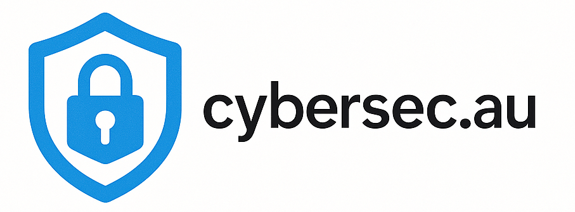The most successful Australian organizations don't just survive cyber attacks—they emerge stronger. This concept of "antifragility" represents the next evolution in cybersecurity thinking: building organizations that gain strength from stressors, adapt rapidly to threats, and turn cyber challenges into competitive advantages.
🏗️ The Resilience Spectrum
Fragile
Breaks under cyber stress
- Single points of failure
- Rigid security controls
- Slow incident response
Robust
Withstands cyber stress
- Redundant systems
- Tested procedures
- Adequate recovery plans
Antifragile
Grows stronger from cyber stress
- Adaptive systems
- Learning mechanisms
- Continuous improvement
Beyond Traditional Risk Management
Traditional cybersecurity focuses on preventing bad outcomes. Antifragile cybersecurity focuses on creating systems that improve through exposure to stressors, uncertainty, and volatility.
The Limitations of Risk-Only Thinking
- Static mindset: Assumes threats are predictable and controllable
- Defensive posture: Focuses only on protection, not adaptation
- Brittleness: Over-optimization for known threats creates blind spots
- Innovation inhibition: Risk aversion slows digital transformation
The Antifragile Alternative
- Dynamic adaptation: Systems that evolve with the threat landscape
- Stress testing: Regular exposure to controlled stressors
- Rapid learning: Fast feedback loops and continuous improvement
- Optionality: Multiple pathways to achieve business objectives
Building Antifragile Cybersecurity
Principle 1: Embrace Controlled Volatility
Regularly expose your organization to controlled cyber stressors:
- Red team exercises: Simulated attacks to test defenses
- Chaos engineering: Intentional system failures to test resilience
- Tabletop exercises: Crisis simulation for leadership teams
- Continuous penetration testing: Ongoing security validation
Principle 2: Build Adaptive Systems
Create security architectures that learn and evolve:
- AI-powered defense: Machine learning that improves with exposure
- Behavioral analytics: Systems that learn normal patterns and detect anomalies
- Automated response: Self-healing systems that respond to threats
- Threat intelligence integration: Real-time adaptation to new threats
🚀 Antifragile Success Story
Organization: Sydney-based e-commerce platform
Challenge: Facing increasing DDoS attacks during peak shopping periods
Antifragile Response: Instead of just defending against attacks, they built systems that automatically scale and optimize performance under attack conditions
Result: DDoS attacks now trigger automatic performance improvements, making their platform faster and more reliable than competitors during high-stress periods
Principle 3: Create Redundancy with Purpose
Build redundancy that adds value, not just backup capability:
- Multi-cloud architecture: Redundancy that also provides vendor negotiation leverage
- Diverse security tools: Multiple detection methods that complement each other
- Cross-trained teams: Staff who can perform multiple security functions
- Distributed operations: Geographic distribution that improves performance
Principle 4: Optimize for Learning
Turn every cyber event into organizational learning:
- Blameless post-mortems: Focus on system improvement, not individual blame
- Threat intelligence sharing: Contribute to and benefit from community knowledge
- Continuous experimentation: Regular testing of new security approaches
- Knowledge management: Capture and share security lessons learned
Organizational Design for Cyber Resilience
Decentralized Security Decision-Making
Distribute security capabilities throughout the organization:
- Security champions: Security advocates in every business unit
- DevSecOps integration: Security embedded in development processes
- Business unit security ownership: Distributed responsibility for security outcomes
- Rapid response teams: Cross-functional incident response capabilities
Cultural Transformation
Build a culture that thrives on cyber challenges:
- Growth mindset: View cyber incidents as learning opportunities
- Psychological safety: Encourage reporting and discussion of security issues
- Continuous learning: Regular security education and skill development
- Innovation encouragement: Reward creative security solutions
Measuring Antifragile Progress
Traditional vs Antifragile Metrics
Traditional Metrics
- Number of incidents prevented
- Compliance percentage
- Security tool coverage
- Vulnerability count
Antifragile Metrics
- Learning velocity from incidents
- Adaptation speed to new threats
- Innovation rate in security
- Stress test performance improvement
Key Antifragile Indicators
- Recovery acceleration: Decreasing recovery time from similar incidents
- Proactive threat discovery: Finding threats before they cause damage
- Security innovation rate: Frequency of security process improvements
- Stress performance: Business performance during high-stress periods
Implementation Roadmap
Phase 1: Foundation Building (Months 1-6)
- Assess current fragilities: Identify single points of failure
- Implement basic redundancy: Eliminate critical dependencies
- Establish learning culture: Create blameless post-mortem processes
- Begin stress testing: Regular security exercises and simulations
Phase 2: Adaptive Capabilities (Months 7-12)
- Deploy adaptive technologies: AI-powered security tools
- Decentralize security: Distribute security capabilities
- Enhance monitoring: Real-time threat detection and response
- Accelerate learning: Faster feedback loops and improvement cycles
Phase 3: Antifragile Optimization (Months 13+)
- Continuous evolution: Systems that improve automatically
- Predictive capabilities: Anticipate and prepare for future threats
- Ecosystem integration: Benefit from broader security community
- Strategic advantage: Leverage security for competitive positioning
Working with Antifragile Security Partners
Building antifragile cybersecurity requires partners who understand both technology and business strategy. Leading cybersecurity providers like Affinity MSP offer antifragile security services including:
- Resilience assessment and antifragile architecture design
- Adaptive security technology implementation
- Continuous stress testing and improvement programs
- Cultural transformation and change management
- Strategic cybersecurity planning and optimization
The Antifragile Advantage
Organizations that embrace antifragile cybersecurity don't just survive in an uncertain world—they thrive because of uncertainty. They turn cyber challenges into opportunities, threats into innovations, and incidents into improvements.
For Australian business leaders, the choice is clear: build organizations that break under pressure, withstand pressure, or grow stronger from pressure. The antifragile choice is the only sustainable path forward.
Build Antifragile Cyber Resilience
Transform your organization's approach to cybersecurity from defensive to antifragile. Get strategic guidance on building resilient, adaptive security capabilities.
Schedule Strategy Consultation